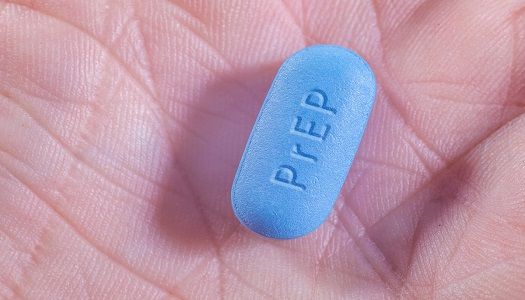HIV PrEP Treatment Works Well for At-risk Teenage Boys
Truvada showed efficacy and safety in HIV-susceptible teenage boys — so as long as they kept up with treatment.

A drug combination therapy has proven efficient as a pre-exposure prophylaxis (PrEP) for HIV in high-risk teenage boys.
Truvada, the pill combination of drugs tenofovir and emtricitabine (TDF/FTC) is currently approved as a daily at-risk adult PrEP. Its efficacy extends at least to males between 15 and 17 years old, study author Bill Kapogiannis, MD, said.
Kapogiannis, of the National Institute of Child Health and Human Development (NICHD) in the National Institutes of Health (NIH), noted that several studies exist showing Truvada’s efficacy in preventing HIV in high-risk adults, but none for an equally susceptible and younger demographic.
Current national data shows a continued increase of HIV rates among young Hispanic and black men who have sex with men, Kapogiannis told MD Magazine, providing the justification for the study.
“The epidemic has been focused among young minority men who have sex with men, and it looks like the diagnoses aren’t decreasing,” Kapogiannis said.
In 2015, youths accounted for 8% of the total AIDS diagnoses in the US that year, according to the Center for Disease Control and Prevention. Of that demographic, 81% (7,109) were gay or bisexual men, and 79% (5,560) were of black or Hispanic/Latino descent.
The 72 adolescent males featured in the NICHD study were at risk for infection, as defined by having unprotected sex with a male partner who either had HIV or whose HIV status was unknown, having at least 3 male sex partners, or having a different sexually transmitted infection.
The 48-week trial of oral Truvada proved safe and effective for the subjects. As patients were periodically tested for HIV, the lone 3 to be diagnosed also had no detectable levels of the PrEP treatment in their blood. It was indicative that the patients had either missed doses, or hadn’t taken the treatment at all.
In fact, lapses of treatment were notable in the patient group. The patient rate of reaching the level of Truvada sufficient to prevent HIV infection decreased over time, from 54% in week 4, 49% in week 12, 28% in week 24, and 22% in week 48.
Researchers were given commonly-reported reasons for treatment lapse, such as patients being away from home, being too busy, or just simply forgetting. The next step for researchers should be in establishing intervention methods that ensure a greater rate of treatment adherence, Kapogiannis said.
“I think the really important lesson we’ve all learned is it works — if it’s taken,” Kapogiannis said. “There’s circumstances in our daily lives that prevent us from taking it appropriately, though.”
Researchers noted patients would likely need more contact with clinical staff during therapy, and Kapogiannis said they are committed to “ensuring youths have access to these forms of interventions.”
Proven safety, tolerability and efficacy in male adolescents gives researchers reason to believe at-risk teenage girls may also benefit from Truvada. A similar study for females is planned, but will not come until “well into the future,” Kapogiannis said.
“There are a lot of questions how it works in that population, but again, there’s not bound to be tremendous differences between a 17-year-old female and a 19-year-old,” Kapogiannis said. “There could be gender differences we need to look at, and that’s why that study needs to be done as well.”
In conjunction with the published study, the NIH is funding PrEP therapy studies for African females aged 16-21. The subjects will use a vaginal ring for 6 months, oral PrEP for another 6 months, then choose one of options to finish out the final 6 months of the study.
The study, "Safety and Feasibility of Antiretroviral Preexposure Prophylaxis for Adolescent Men Who Have Sex With Men Aged 15 to 17 Years in the United States," was published online in JAMA this month.
A press release regarding the study was made available.
Related Coverage
Researchers Find Cause, Possible Treatment for Cardiovascular Risks in HIV Patients